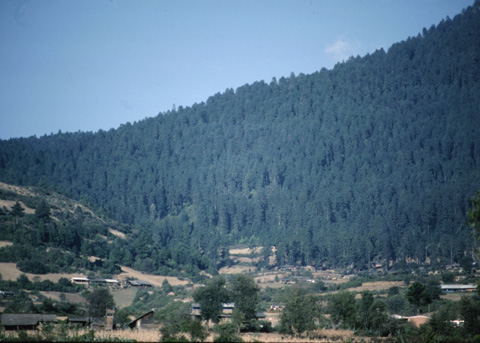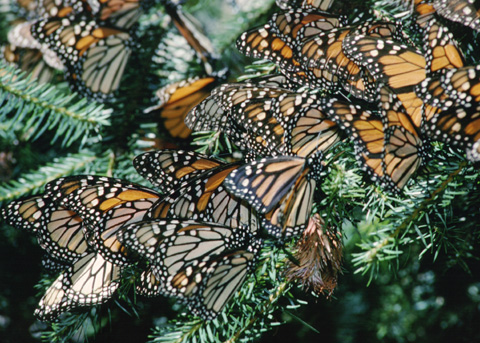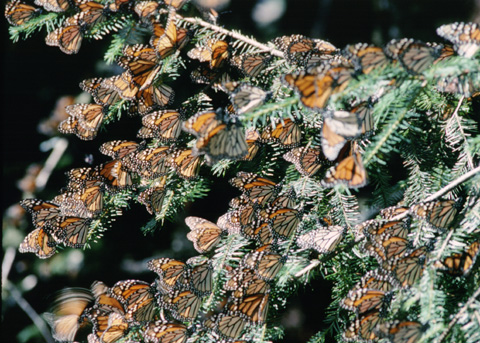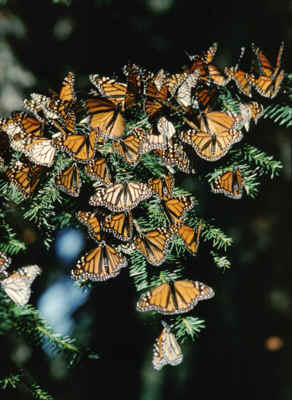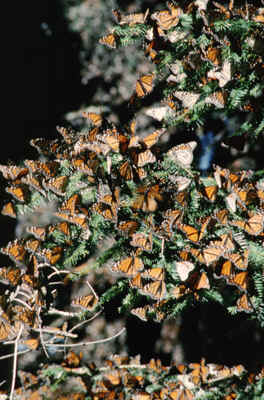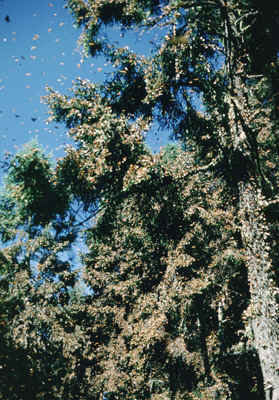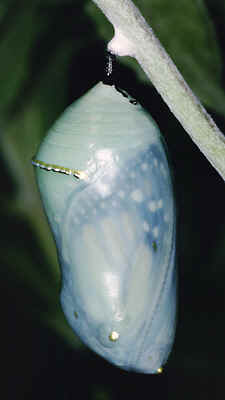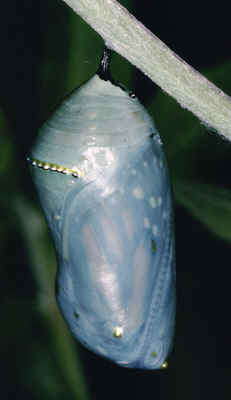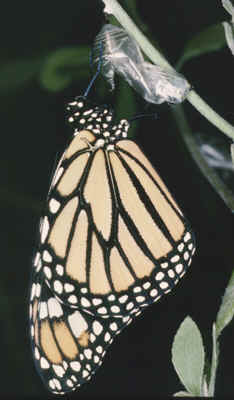
Male. Androconial (scent-producing) scales on hind wings. © Peter J. Bryant. |
Monarch Danaus plexippus Lepidoptera: Danaidae Back to Butterflies of Orange County, California |
 Female. © Peter J. Bryant |
 Mating pair. © Peter J. Bryant |
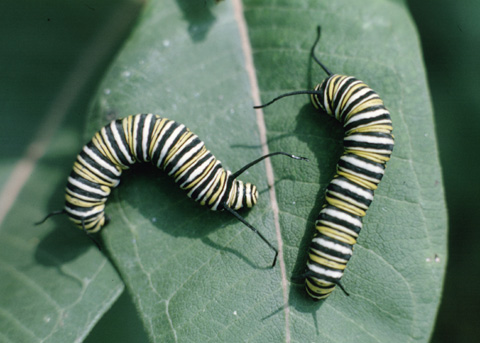 Caterpillars. © Peter J. Bryant |
 Prepupa. Fullerton Arboretum, Fullerton, Orange County, CA. 12-12-08. © Ron Hemberger |
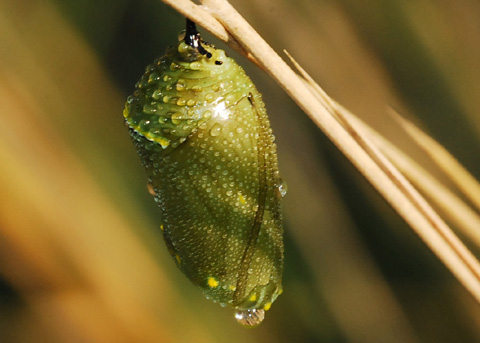 Pupa. Fullerton Arboretum, Fullerton, Orange County, CA. 12-12-08. © Ron Hemberger |
Later pupa. Fullerton Arboretum, Fullerton, Orange County, CA. 1-13-09. © Ron Hemberger |
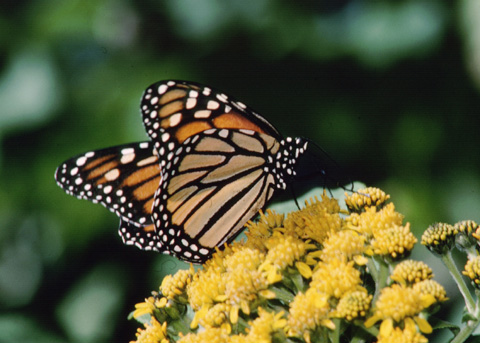 Female underside. © Peter J. Bryant |
 Female laying eggs. San Clemente, Orange County, CA. 4-24-12. © Robert Gorman. |
 Adult and caterpillar. Fullerton Arboretum, Fullerton, Orange County, CA. 11-12-06. © Ron Hemberger. |
Female laying egg. Fullerton Arboretum, Fullerton, Orange County, CA. 12-12-06. © Ron Hemberger. |
Female laying egg. Fullerton Arboretum, Fullerton, Orange County, CA. 12-12-06. © Ron Hemberger. |
Female laying egg. Fullerton Arboretum, Fullerton, Orange County, CA. 12-12-06. © Ron Hemberger. |
Mating pair. Fullerton Arboretum, Fullerton, Orange County, CA. 1-9-07. © Ron Hemberger |
Mating pair. Fullerton Arboretum, Fullerton, Orange County, CA. 1-9-07. © Ron Hemberger |
Mating pair. Fullerton Arboretum, Fullerton, Orange County, CA. 1-9-07. © Ron Hemberger |
Egg. Fullerton Arboretum, Fullerton, Orange County, CA. 12-12-06. © Ron Hemberger. |
Overwintering Monarchs at Pismo Beach. © Ron Hemberger |
Overwintering Monarchs at Pismo Beach. © Ron Hemberger |
|
Characteristics: The Monarch is one of our larger butterflies. The dorsal wing is orange with veins outlined in black. The species has wide black borders on the dorsal wing margins with numerous white spots within. Similar Species: The Striated Queen (Danaus gilippus strigosus) . Habitats, Behavior: This butterfly is famous for its annual migrations, although factors inducing these flights are still poorly understood. Adults overwinter in the southern United States, Mexico and along the California coast. Pacific Grove (in Monterey County) harbors perhaps the greatest concentration of overwintering Monarchs in the western United States. There, adults roost on eucalyptus trees in unbelievable numbers. Monarchs are known to fly great distances during the annual migration; one tagged in Canada was recaptured in Mexico. They may live from six to nine months or more. Distribution: In Orange County this butterfly is usually encountered in lowland areas. Currently, I know of no records from the Santa Ana Mountains. The Monarch occasionally occurs in the foothills, particularly in moist areas . Flight Period: Our Orange County records are grouped from January to March and again from September to November. These data may correlate with the butterfly's migrations through the county. The species has been recorded in the County every month of the year by Ron Hemberger. Larval Foodplants: Milkweeds of the genus Asclepias. Two species grow in Orange County although they are not generally common: A. eriocarpa and A. fascicularis (Boughey, 1968). The Monarch is much more common in other parts of southern California where the foodplant grows in greater abundance. Other Remarks: Like the Queen, the Monarch may be sexed by the presence of a dark sex spot, of unknown function, on the dorsal hindwing of the male. These spots do not appear to be essential in mating (Pliske and Eisner, 1969). Text from Orsak, L. J. (1977). The Butterflies of Orange County, California. Center for Pathobiology Miscellaneous Publication #3. University of California Press, New York. 349pp. Updated by Peter Bryant. Back to Butterflies and their larval foodplants |
|

